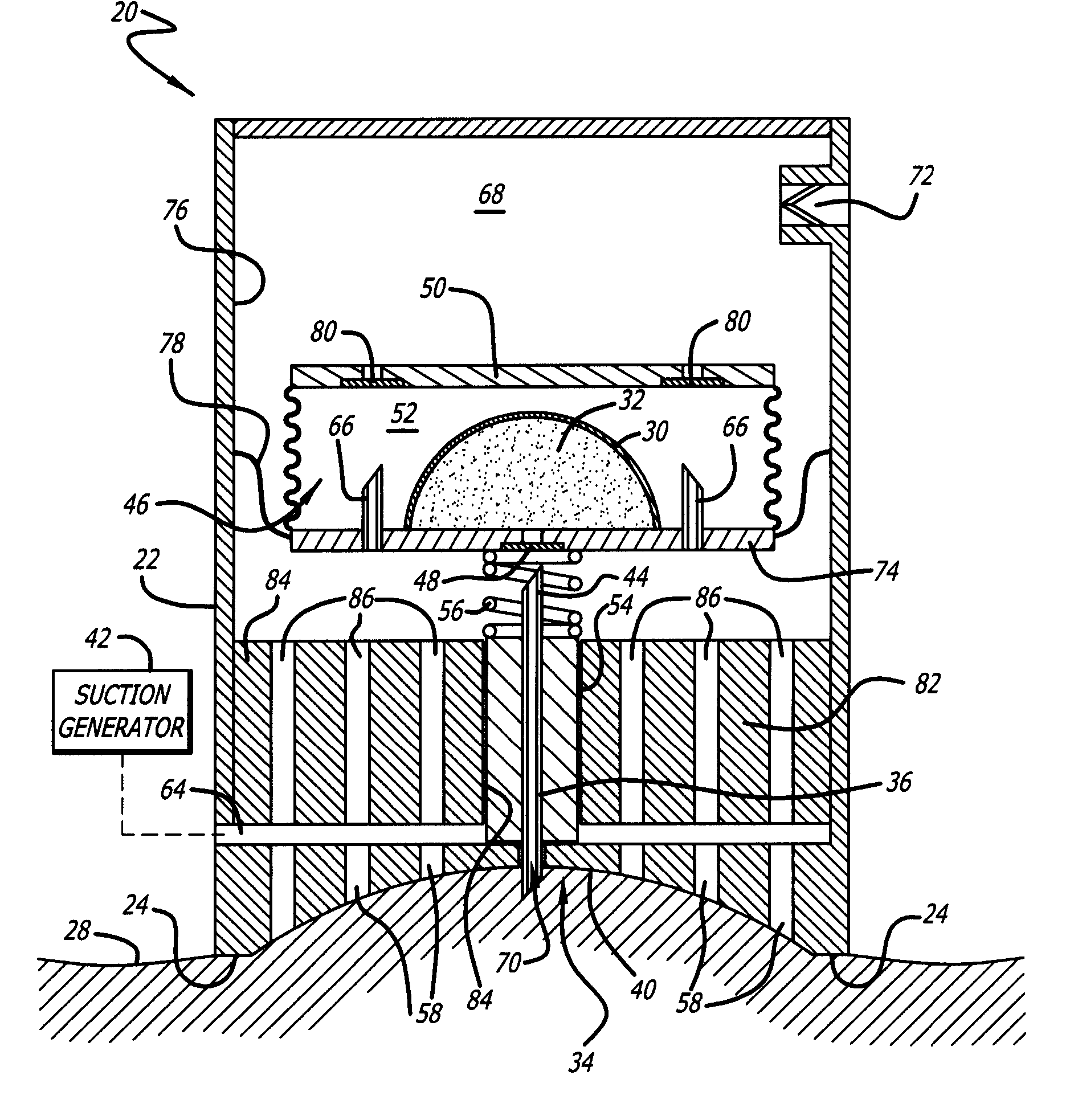Ablation and micro-needles
a micro-needle and needle technology, applied in the field of injection delivery, can solve the problems of syringes not being useful for self-administration by patients, and affecting the effect of needle engagemen
- Summary
- Abstract
- Description
- Claims
- Application Information
AI Technical Summary
Benefits of technology
Problems solved by technology
Method used
Image
Examples
Embodiment Construction
[0070] The disclosure is described with reference to the accompanying drawings.
[0071] A device, system and method is for delivery of fluids by injection to the cutaneous or subcutaneous region of a living body under the effects of suction or a vacuum.
[0072] The device 20 includes a housing 22 having a peripheral edge 24 and a needle 26 in the housing for piercing the cutaneous layer 28. There is a bladder 30 for containing fluid 32 for injection below the cutaneous layer 28, and an area 34 transversely within peripheral edge 24 of the housing 22 and through which the proximal end 36 of the needle 26 may be directed.
[0073] The area 34 is for receiving the surface 38 of the cutaneous layer 28 about which the proximal end 36 of the needle 26 is to pierce to effect an injection of fluid 32. The area 34 includes a surface 40, the surface being for receiving the cutaneous layer 28 under action of the suction force, and thereby stabilize the cutaneous layer prior to and during piercing ...
PUM
 Login to View More
Login to View More Abstract
Description
Claims
Application Information
 Login to View More
Login to View More - R&D
- Intellectual Property
- Life Sciences
- Materials
- Tech Scout
- Unparalleled Data Quality
- Higher Quality Content
- 60% Fewer Hallucinations
Browse by: Latest US Patents, China's latest patents, Technical Efficacy Thesaurus, Application Domain, Technology Topic, Popular Technical Reports.
© 2025 PatSnap. All rights reserved.Legal|Privacy policy|Modern Slavery Act Transparency Statement|Sitemap|About US| Contact US: help@patsnap.com



